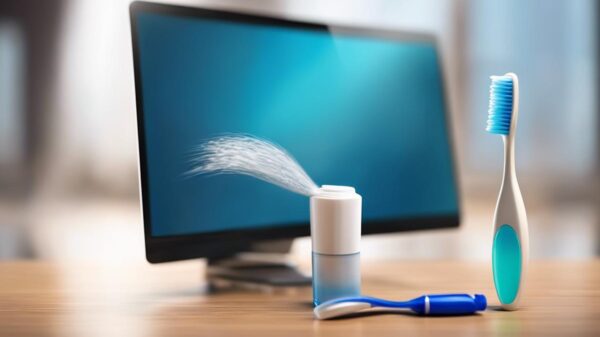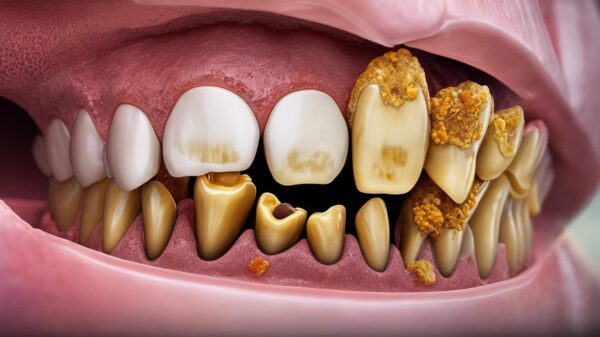How Effective Are Whitening Strips?
I love coffee, but I don’t love the stains it leaves on my teeth. I’m always being bombarded by ads for at-home whitening treatments, and I’ve wondered whether or not whitening strips are worth the time and money. So, I decided to do some research and find out the true answer.
Do whitening strips work? Yes, they do. The active ingredients in whitening strips are typically hydrogen peroxide or carbamide peroxide, which break down stains on your teeth by releasing free oxygen radicals. It’s the same process used in dentist office whitening treatments.
Whitening strips are effective in and of themselves, but there are some things you can do to ensure you get the most out of them. The first step to doing this is to fully understand how they work.
How Whitening Strips Work
Whitening strips contain a peroxide-based gel that is rubbed against the surface of your teeth when you apply the strips. The gel and the strips work together to gradually lift away stains and other debris from your teeth.
The gel starts working immediately, even though you won’t necessarily notice it after your first application. As you continue using the whitening strips though, the active ingredients will continue to break down stains on your teeth, revealing the natural white color below. You may begin to see results within a few days, but you’ll see the most dramatic change after a few weeks.
![]()
Types of Tooth Stains
As you use your whitening strips, it’s important to note that there are two types of tooth stains: intrinsic and extrinsic.
Intrinsic stains come from within the tooth and are caused by age and exposure to various minerals and metals. Extrinsic stains sit on the surface of your teeth and are caused by external factors such as smoking or drinking dark beverages like coffee or tea.
Whichever type of staining you have, you’re in luck. Whitening strips can break down both of these types of stains. They cannot, however, change the color of crowns, veneers, dentures, or fillings. These are specifically made to match your teeth. Because of this, you’ll need to talk to your dentist if you want to have them whitened.
As far as your natural teeth go, each whitening strip brand works slightly differently and can affect each individual uniquely. The specific type of stains you have and how severe they are will determine how effective each type of whitening strip will be for you.
Because of this, it’s important to remember that just because one brand didn’t work well doesn’t necessarily mean that nothing will. Try another one with a different active ingredient, and read the instructions carefully to make sure you’re using them correctly. If after a few tries you’re still struggling to find the right one, ask your dentist for advice.
Where To Buy Whitening Strips
You can buy whitening strips at most drugstores and many grocery stores. Most common brands contain hydrogen peroxide or carbamide peroxide as the main ingredient, and they typically cost anywhere from $10 to $40 per treatment.
Both hydrogen peroxide and carbamide peroxide are safe and effective. However, you should be wary of whitening strips that contain other ingredients, like sodium hydroxide or potassium nitrate. These whiteners can be harmful if not used properly.
Most over-the-counter whitening strips, however, can prevent further damage to your enamel when used correctly. Just make sure you follow the instructions that came with the strips you purchased and don’t assume that the instructions for one brand are the same for another.
As you shop, you may also notice that several brands offer strips for varying degrees of whiteness. Pay attention to this, because it can impact how effectively the whitening strips work for your whitening goals as well as how many days you’ll have to apply the strips to complete the treatment.
Many also offer a variety of sizes, so you can decide if you want to use them on just your front teeth or back to your molars. Some brands even offer special strips that are meant to be used on sensitive teeth.
How To Use Whitening Strips Effectively
Typically most brands will tell you to apply your whitening strips twice per day for about two weeks. Usually, you only need to leave them on for 30 minutes or so, making them an easy step to incorporate into your morning and evening routines.
Generally, you should brush your teeth a little while before you apply your strips to get rid of any food particles on your teeth. Many brands tell you to avoid applying your strips immediately after brushing, however, so be sure to pay attention to this in the instructions. You should also avoid eating or drinking anything while your teeth are being whitened.
It’s important to be consistent when you’re using your whitening strips, otherwise, you may not see the results you want. If you do follow the instructions and stick with it though, you’ll likely start to see whiter teeth after just a few days.
If at the end of the treatment, your whitening strips don’t whiten your teeth as much as you would like, this might be a sign that you have more significant staining and need to talk to your dentist about a professional whitening treatment. (It also may mean that you just need to try a different brand).
When you just need to brighten up your teeth though, whitening strips are a highly effective way to do this.
How to Prevent Future Tooth Stains
To prevent future stains on your teeth, there are a few simple things you can do. First of all, avoid smoking or drinking dark beverages such as:
- Coffee
- Tea
- Red wine
- Dark sodas like Coca-Cola and Pepsi
If you do drink any of these, consider using a straw or rinsing your mouth with water afterward to remove any residue.
Second, make sure you brush and floss your teeth regularly. It’s important to get in the habit of brushing twice a day and flossing once a day. This will remove any sugars or food that cause cavities and staining.
Use toothbrushes with soft bristles instead of hard bristles, and don’t push too hard or brush too often, as too much friction can cause enamel damage and make your teeth look darker over time.
Finally, be sure to get regular dental cleanings and checkups. Your dentist can remove plaque and other buildup that your regular toothbrush can’t, preventing stains from building up in the first place.
![]()
At-Home Tooth Whitening Methods
Many people swear by home remedies for stained teeth, but few of them work safely and effectively. Some of these include:
- Strawberries or citrus fruit
- Baking soda and hydrogen peroxide
- Scrapers made from ice cubes or a toothbrush handle
- Lemon juice and baking soda
These methods are not only unreliable, but they can also damage your tooth enamel. This results in tooth sensitivity to hot and cold temperatures, a higher risk of cavities, and even more yellowing and staining.
Instead of trying these methods, save yourself some time and discomfort by using whitening strips instead.
Home Teeth Whitening Devices
GLO Brilliant ® is the only dentist invented, clinically proven teeth whitening device using Illuminating Heat Technology™. It is able to brighten smiles up to 12 shades.It is a FDA Registered device with great results.
Alternative Store-Bought Teeth Whitening Methods
In stores, you can often find alternative tooth whitening options such as charcoal whiteners. The activated charcoal in these treatments binds to stains and other debris on your teeth and then lifts them away.
While charcoal whiteners can be somewhat effective, they can also cause damage and discomfort, so you should speak with your dentist before using them.
Other store-bought whitening options include whitening mouthwash, toothpaste, and even chewing gum. These can help remove and prevent some stains, but they will not whiten your teeth significantly if you are struggling with more significant staining or discoloration.
Whitening strips are typically the most effective option for people looking to brighten up their smiles. If you want whiter teeth in a short time, you’ll find few options as safe and convenient as whitening strips.
![]()
Related Questions
What are the side effects of whitening strips? Side effects from whitening strips are rare, but they can happen. Common side effects include tooth discomfort, temporary dry mouth, and increased tooth sensitivity to hot and cold.
In addition, whitening strips that contain sodium hydroxide can cause chemical burns if they come in contact with your gums, so check the active ingredient list before you make your purchase. If you experience any of these side effects, stop using your whitening strips and call your dentist as quickly as possible.
What is the benefit of using whitening strips? The main benefit of whitening strips is that they are incredibly effective at removing stains on your teeth without requiring you to schedule and pay for professional treatment.
They also allow you to whiten your teeth in the comfort of your home, making them a convenient way to work tooth whitening into your daily routine. In addition, while whitening strips can feel a little pricey initially, they are still usually far cheaper and more convenient than professional whitening treatments.
How white should my teeth be? How white your teeth should be is a matter of preference, and different people have different standards for this. Many people feel satisfied if they can brighten their teeth to a natural-looking white, while others prefer a bright, shiny white.
Whichever level you want, make sure you pay attention to while shopping for your whitening strips so that you purchase a product that will help you reach your whitening goals.















